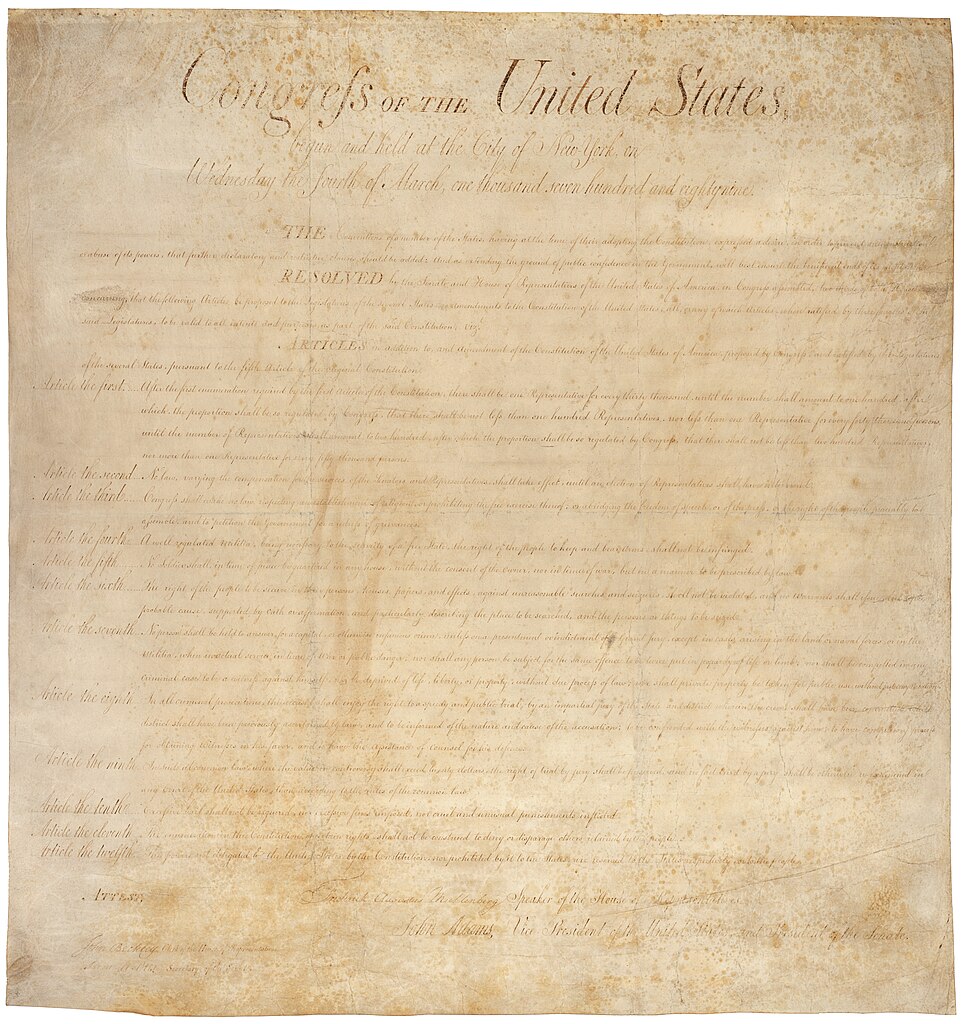American Revolution
While Cromwell at one point had referred to Magna Carta as ‘Magna Farta’ the 'Levellers' led by Lt. Col. John Lilburne held the 1215 agreement in highest regard as a cornerstone of the constitution. At one point they were feasibly able to challenge Cromwell for power.
Lilburne died tragically young from the ruination of his health caused by the floggings, wounds and bad conditions of lengthy imprisonment he had suffered at the hands of both Royal and Parliamentary authorities before, during and after the civil war.
Lilburne died tragically young from the ruination of his health caused by the floggings, wounds and bad conditions of lengthy imprisonment he had suffered at the hands of both Royal and Parliamentary authorities before, during and after the civil war.
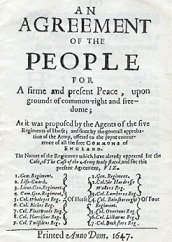
He won legal victories against false prosecution by both the King and Parliament that have subsequently informed the drafting of the main provisions of the US Constitution and Bill of Rights.
He wrote most of the Leveller 'Agreement of the People' which could be described as the first democratic draft of a working class British constitution.
His opinions evolved from radical protestant to a fairly non-sectarian viewpoint in defence of freedom of worship similar to the standpoint of the Quakers.
He condemned Machiavellian influences upon the political struggle - which some claimed best explained Cromwell’s tactics - but did not ultimately renounce the right to armed struggle against tyranny.
He wrote most of the Leveller 'Agreement of the People' which could be described as the first democratic draft of a working class British constitution.
His opinions evolved from radical protestant to a fairly non-sectarian viewpoint in defence of freedom of worship similar to the standpoint of the Quakers.
He condemned Machiavellian influences upon the political struggle - which some claimed best explained Cromwell’s tactics - but did not ultimately renounce the right to armed struggle against tyranny.
Benjamin Franklin
Further legal victories for jury powers were won by the Quaker William Penn and incorporated in the governing principles of Pennsylvania.
These in turn were subsequently endorsed by Benjamin Franklin who, like Lilburne and unlike Penn, would not relinquish the right to armed struggle against tyranny.
Franklin's assistance to Tom Paine is one of the main, final links in understanding how the unfinished business of the English Civil War emigrated to the thirteen colonies and reached a more developed but still incomplete stage of struggle in the American Revolution and adoption of the US Constitution.
These links demonstrate how this process of constitutional change endured for a period of centuries and helped elevate the role of commoners to exert an increasing influence upon local and central government.
This took place most especially in the 17th century and was led by tradesmen and artisans.
Further legal victories for jury powers were won by the Quaker William Penn and incorporated in the governing principles of Pennsylvania.
These in turn were subsequently endorsed by Benjamin Franklin who, like Lilburne and unlike Penn, would not relinquish the right to armed struggle against tyranny.
Franklin's assistance to Tom Paine is one of the main, final links in understanding how the unfinished business of the English Civil War emigrated to the thirteen colonies and reached a more developed but still incomplete stage of struggle in the American Revolution and adoption of the US Constitution.
These links demonstrate how this process of constitutional change endured for a period of centuries and helped elevate the role of commoners to exert an increasing influence upon local and central government.
This took place most especially in the 17th century and was led by tradesmen and artisans.
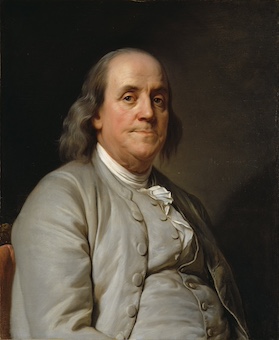
Benjamin FRANKLIN (1706-1790)
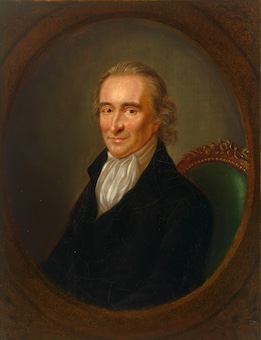
Tom Paine
A half century later Tom Paine, a working class activist, was sponsored by the most intelligent craftsman and political leader of the age and emerged to lead calls to declare for American independence.
At the forefront of these advances upon a world historical scale was jury power.
A half century later Tom Paine, a working class activist, was sponsored by the most intelligent craftsman and political leader of the age and emerged to lead calls to declare for American independence.
At the forefront of these advances upon a world historical scale was jury power.
Thomas PAINE (1737-1809)
Author of Common Sense (1776) and The American Crisis (1776-1783)
two of the most influential pamphlets at the start of the American Revolution
Establishment of Grand Juries in the USA
When the colonists crossed the Atlantic to America, they brought with them a legal system based mainly upon the British system of jurisprudence, including the grand jury.
As developed in England, the historic function of the grand jury was to stand as an independent bulwark protecting citizens from malicious Crown prosecutions.
To this purpose the grand jury began to accept testimony in secret to protect both jurors and witnesses against the unjust power of over mighty government. The Shqftesbury case strengthened this image of the grand jury as the guardian of the individual by refusing to indict opponents of the King.
Grand juries were established in colonies almost as soon as they were established: Massachusetts Bay in 1634, Plymouth in 1635, Maryland in 1637, Rhode Island in 1640, Virginia in 1641, Connecticut in 1643, New Jersey in 1675 and Pennsylvania in 1683.
Grand juries rapidly became the chief means by which the colonists could voice grievances against British rule due to their independence from Crown control.
As the opposition to the British became more overt, grand juries became more sympathetic to the colonists. One example of this is the newspaper publisher John Peter Zenger.
When the colonists crossed the Atlantic to America, they brought with them a legal system based mainly upon the British system of jurisprudence, including the grand jury.
As developed in England, the historic function of the grand jury was to stand as an independent bulwark protecting citizens from malicious Crown prosecutions.
To this purpose the grand jury began to accept testimony in secret to protect both jurors and witnesses against the unjust power of over mighty government. The Shqftesbury case strengthened this image of the grand jury as the guardian of the individual by refusing to indict opponents of the King.
Grand juries were established in colonies almost as soon as they were established: Massachusetts Bay in 1634, Plymouth in 1635, Maryland in 1637, Rhode Island in 1640, Virginia in 1641, Connecticut in 1643, New Jersey in 1675 and Pennsylvania in 1683.
Grand juries rapidly became the chief means by which the colonists could voice grievances against British rule due to their independence from Crown control.
As the opposition to the British became more overt, grand juries became more sympathetic to the colonists. One example of this is the newspaper publisher John Peter Zenger.
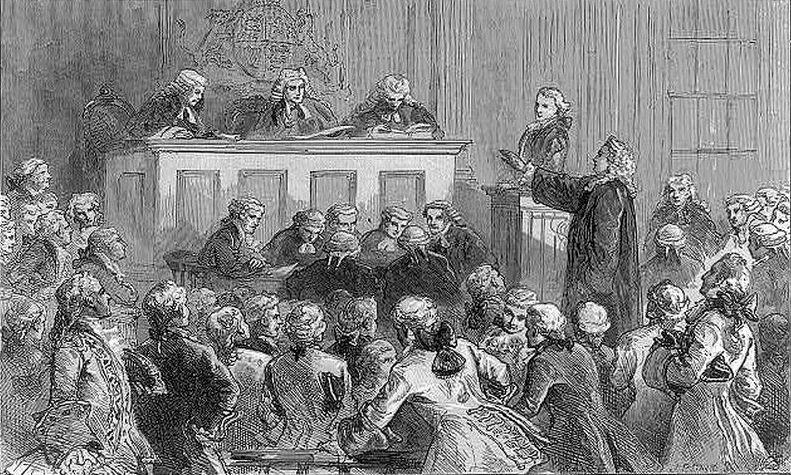
Andrew Hamilton defending John Peter Zenger in court (1734-1735)
John Peter Zenger
John Peter Zenger (1697–1746), was the publisher of the New York Weekly Journal. In 1734, he was arrested and imprisoned for seditious libel following publication of an article criticising Royal Governor William Crosby.
In 1735 Zenger was tried before a jury of his peers. Against the judge’s instructions to decide only the question of facts, the jury found Zenger not guilty.
As a result of the decision, the colonial newspapers were free to openly criticize the British crown. As Gouvernor Morris, who helped write the U. S. Constitution, noted, “The trial of Zenger in 1735 was the germ of American Freedom, the morning star of liberty that subsequently revolutionized America.”
John Peter Zenger (1697–1746), was the publisher of the New York Weekly Journal. In 1734, he was arrested and imprisoned for seditious libel following publication of an article criticising Royal Governor William Crosby.
In 1735 Zenger was tried before a jury of his peers. Against the judge’s instructions to decide only the question of facts, the jury found Zenger not guilty.
As a result of the decision, the colonial newspapers were free to openly criticize the British crown. As Gouvernor Morris, who helped write the U. S. Constitution, noted, “The trial of Zenger in 1735 was the germ of American Freedom, the morning star of liberty that subsequently revolutionized America.”
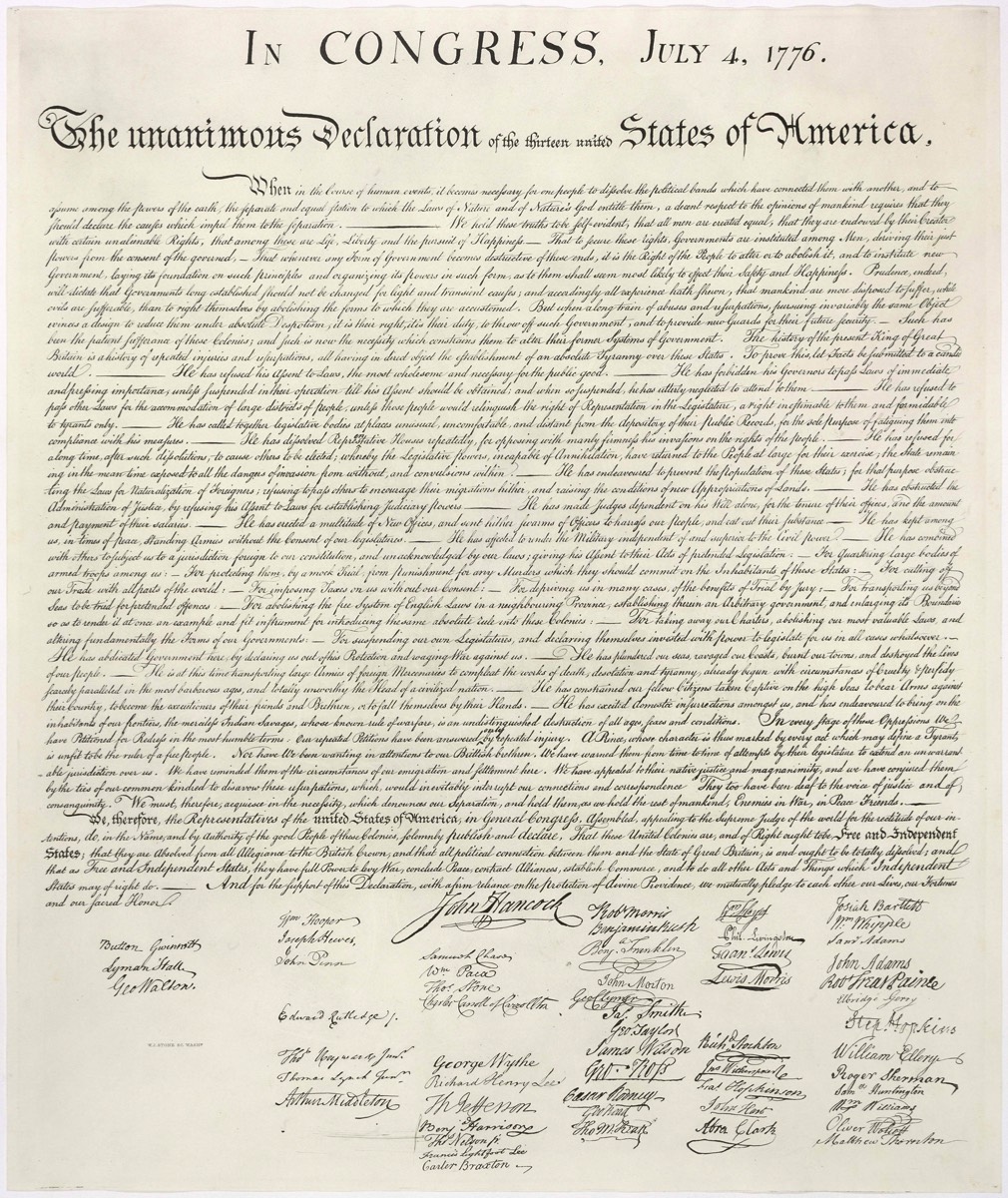
Declaration of Independence 1776
As the American Revolution began, the colonial grand juries began to assert themselves even more forcefully. They issued indictments against British sympathizers and prohibited them from sitting on grand juries.
The British attempted to deal with this problem by further suppressing the rights of the colonists. Consequently one main cause of the American Revolution was British denial of the right of the colonists to trial by jury in America. This became a further factor in the refusal of colonial grand juries to indict suspects undergoing prosecution for sedition.
These issues were accordingly listed among the primary grievances of the Americans against the British authorities in their Declaration of Independence of 1776.
Thomas Jefferson specifically cited the importance of the jury system in the Declaration’s litany of grievances against King George III and the English government, “For depriving us, in many cases, of the benefits of Trial by Jury.”
Thomas Jefferson
Thomas Jefferson further emphasised the international significance of the Right to Trial by Jury in regard to the refusal of French revolutionary leaders to include it in their Declaration of Rights of 1789.
He wrote from Paris to Thomas Paine on the matter and made clear his recognition of ‘trial by jury as the only anchor ever yet imagined by man by which government can be held to the principles of its constitution.’
Jefferson accordingly raised serious doubts about whether France was capable of overcoming centuries of autocratic rule and arbitrary, corrupt practices in legal method so as to emulate the American example in a feasible time scale.
Jefferson’s insights on the matter were astute and formidable and extended further to the question of how the role of randomly selected juries could best be placed in constitutional design.
In July 1789 he wrote “Were I called upon to decide whether the people had best be omitted in the legislative or judiciary department, I would say it is better to leave them out of the legislative. The execution of the laws is more important than the making of them. However it is best to have the people in all the three departments where that is possible.”
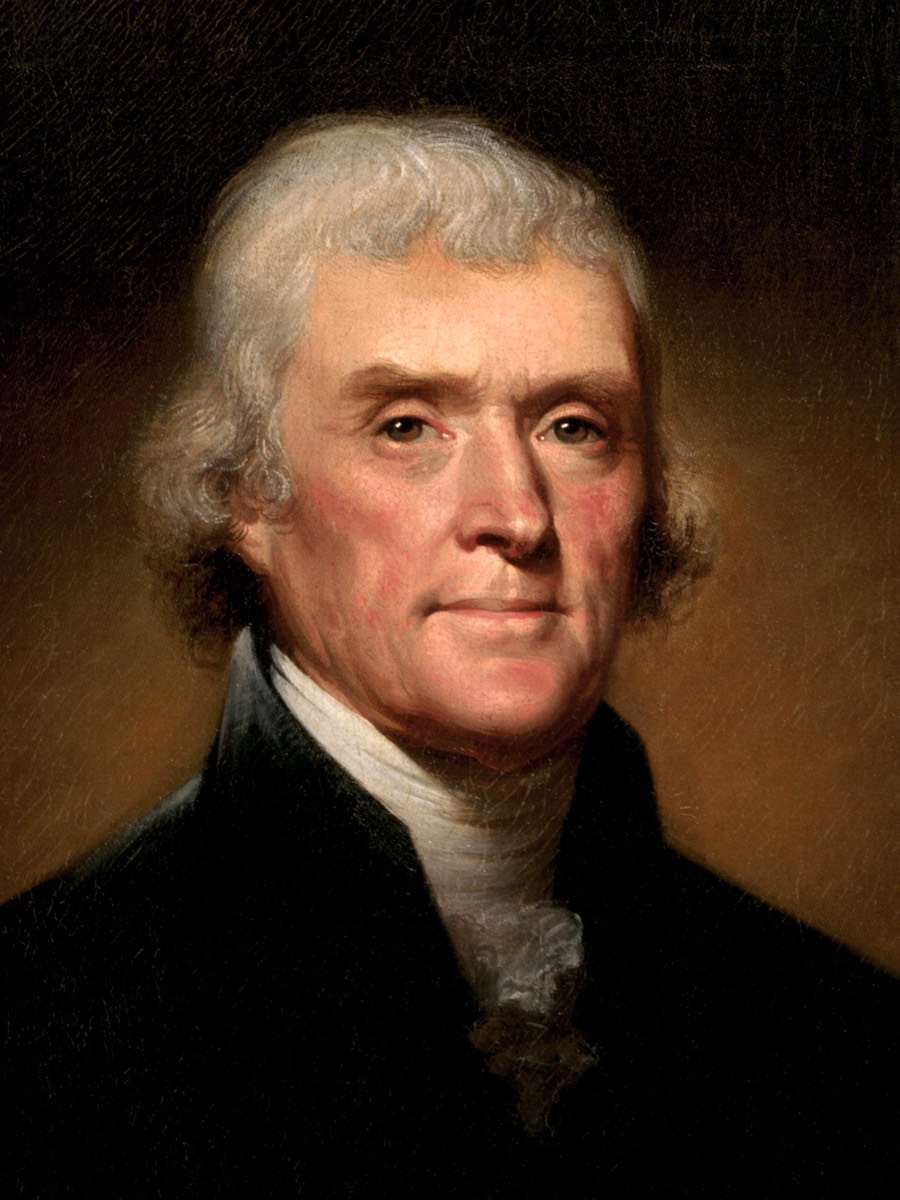
Thomas JEFFERSON (1743 - 1826)
Founding Father and 3rd President of the USA
US Bills of Rights
In 1791 the final consequence of the ratification process of the American Constitution resulted in the incorporation of the right to indictment by Grand Jury and Trial by Jury in three of the ten amendments that comprised the US Bill of Rights.
Though Jefferson would ‘have gone further’ in emplacing jury power through different branches of government such as the legislature he nevertheless recognised that the judicial arm is the most effective branch in which the entrenchment of jury power could ensure the ultimate accountability of government to the people.
It was against this background that a jury was included in the US Supreme Court during the early years of its existence.
The historic function of the grand jury, commonly referred to as the shield and the sword of the people (the former to protect citizens from state abuse of power, the latter to combat corruption within the state) survives to this day, albeit more constrained by subsequent primary and secondary legislation and Supreme Court decisions at both federal and state levels.
